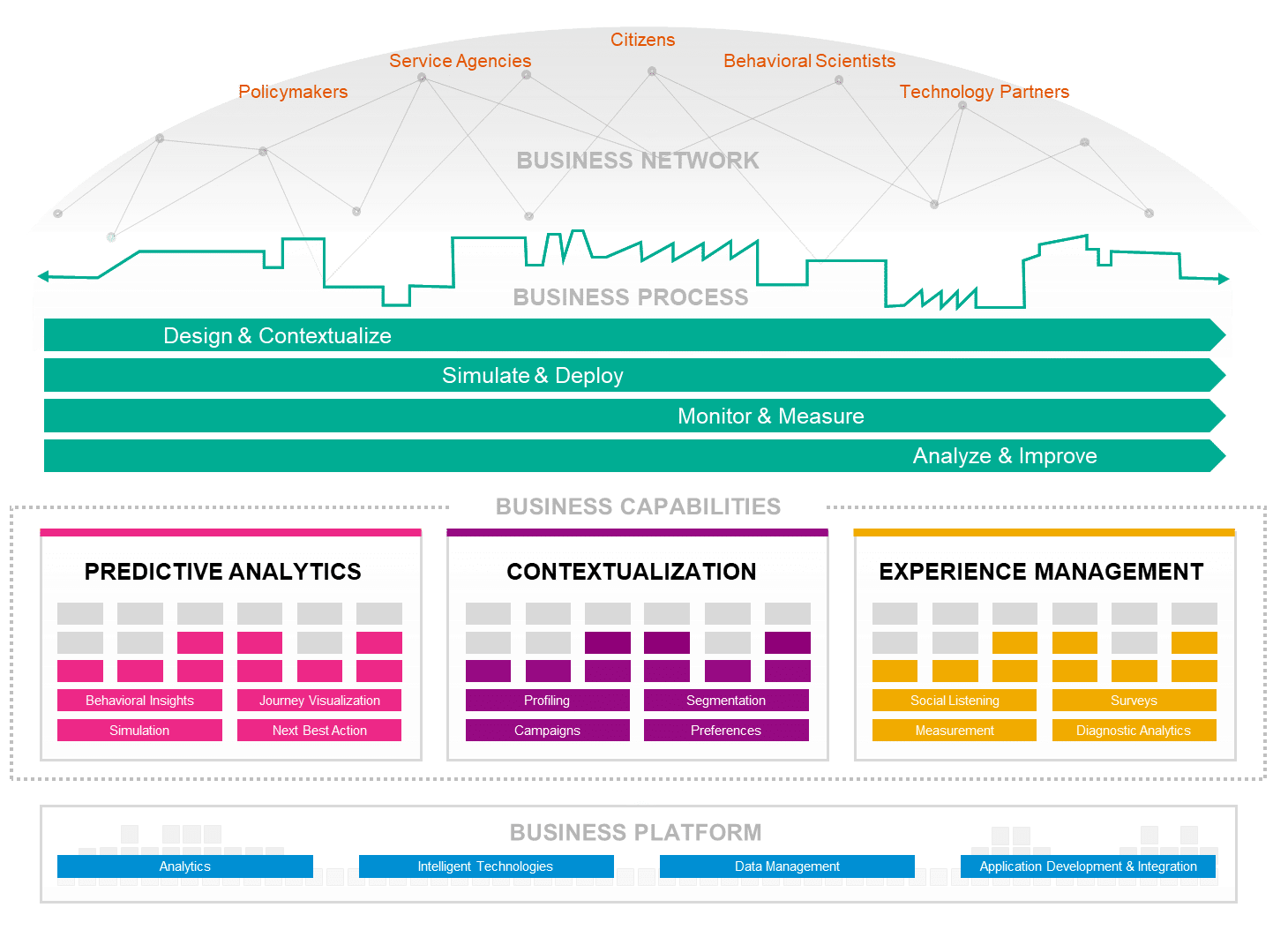An SAP reference architecture for Digital Nudges
The last article in our “Dealing with Disruption” series presented a conceptual architecture for Digital Nudges and demonstrated how it could be applied to improve crisis communications relating to a second-wave outbreak of the Coronavirus. In this companion piece, we seek to demonstrate that governments have ready access to the business applications and technologies required to deliver digital nudges today.
To achieve this, we’ll map our conceptual architecture to SAP products that are generally available and are already in use by governments around the world.
Conceptual Architecture
For reference, our conceptual architecture for digital nudges is depicted below.

Figure 1: A conceptual architecture for digital nudges.
SAP Reference Architecture
Mapping our conceptual architecture to SAP products provides assurance that our conceptual architecture can be delivered in practice.

Figure 2: An example reference architecture for digital nudges.
Note that SAP’s product roadmap will evolve over time, so this bill of materials should be considered representative rather than prescriptive.
- Predictive Analytics:
- Machine Learning applications (e.g. SAP Behavioral Insights): enables organizations to analyze the behavior of customers and to generate risk scores and insights.
- Contextualization:
- SAP Marketing Cloud: enables organizations to use consent-based marketing and advanced data analytics to engage customers with pinpoint accuracy.
- Experience Management:
- SAP Qualtrics: enables organizations to gather experience data and combine it with operational data to close experience gaps.
- Analytics:
- SAP Digital Boardroom: enables organizations to provide a single source of truth to decision makers about the most important business metrics in real time.
SAP Analytics Cloud: enables organizations to combine BI, planning, predictive, and augmented analytics capabilities into one simple cloud environment.
- SAP Digital Boardroom: enables organizations to provide a single source of truth to decision makers about the most important business metrics in real time.
- Intelligent Technologies:
- SAP Data Intelligence: enables organizations to process distributed data and provide users with intelligent, relevant, and contextual insights with integration across the IT landscape.
SAP HANA Predictive Analytics Libraries: enables organizations to define functions that can be called from within SQLScript procedures to perform analytic algorithms.
- SAP Data Intelligence: enables organizations to process distributed data and provide users with intelligent, relevant, and contextual insights with integration across the IT landscape.
- Data Management:
- SAP Data Warehouse Cloud: enables organizations to deliver a data warehouse in the cloud to unite multiple data sources in one solution.
SAP HANA Database: enables organizations to accelerate data-driven, real-time decision-making and actions via a high-performance in-memory database.
- SAP Data Warehouse Cloud: enables organizations to deliver a data warehouse in the cloud to unite multiple data sources in one solution.
- Application Development & Integration:
- SAP Process Orchestration: enables organizations to model, implement, integrate, and monitor custom process applications and integration scenarios.
- SAP Cloud Platform: enables organizations to accelerate integration, simplify development of application extensions, and expand business value with an open ecosystem.
In presenting this reference architecture, our intent has been to provide a worked example to demonstrate that governments have ready access to the business applications and technologies required to deliver digital nudges today, using business and technology components from SAP.
While other vendors might be able to offer some components of a digital nudge platform, we believe there is a benefit in sourcing the end-to-end solution from a single vendor.
To read more Public Sector content or find out more about SAP’s Public Sector customers and products, visit: SAP ANZ Public Sector Homepage



